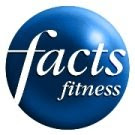What’s your “it?” Being a parent? Performing well in a job that requires physical labor? Participating in a sport? Feeling a little spring in your step when you do your daily errands? Regardless of what your “it” is, functional fitness training is the answer for improving your performance, energy, and aptitude to accomplish daily tasks in an enjoyable manner.
Personally, my fitness goals have changed over the years. Whereas once upon a time, my “it” was getting strong for baseball and feeling confident lifting weights in the gym, my focus has now shifted. I want to feel great going about my daily routine. Since my daily schedule and tasks vary greatly, and since I like to be spontaneous with regards to my physical activity (contrary to some popular advice, I do not plan out my workouts from day to day and week to week), I say that I train for life; and in my life, that means a variety of things from chasing my toddler around, to going through an intense training session, to playing a sport (not particularly well at this point in time), to helping move around 1000 pound pieces of equipment at one of our facilities.
Imagine going about your daily activities feeling winded, experiencing back pain, and in essence, be unable to “keep up.” Kind of scary, don’t you think? I train so that I can go about these daily activities with energy, stamina, and without pain or exhaustion. And as a competitive person, I also strive to not only “keep up,” but get out ahead of the “pack.” I call it life specific training. Life specific, or functional training, isn’t executing a barbell bicep curl with as much weight as possible. Last time I checked, curling up heavy weight on a barbell by flexing my elbow joint wasn’t required in most of my daily tasks. Instead, I am a bigger and bigger advocate or incorporating training that utilizes body weight resistance, stability, quick movements, and balance, while increasing your heart rate (thus training the most important muscle in the body). Functional circuit training can include the utilization of not only your own body weight, but stability balls, medicine balls, BOSU balance trainers, TRX systems, agility ladders, cones, plyometric boxes, jump rope, and a pair boxing gloves and a heavy bag or focus mitts (if you are training with a partner).
I can’t speak highly enough for the value of shifting your attention to this style of training. The difference in how you will feel and perform becomes apparent very quickly, and the physical results will come with time. While weights and machines have their place in fitness training, exercise is trending more and more to the functional, life specific realm. Not only is it extremely advantageous in terms of doing your “it” better, but you can bring this style of training anywhere you go, and the equipment is inexpensive and not bulky. Just be sure to consult with a trainer, or increase your involvement in group fitness (many classes are now tailored toward this style of training) before making functional training the centerpiece of your program. As is the case in all modalities of training, there is margin for error, and without proper instruction and execution, you will not achieve optimal results, and could place yourself at risk of injury. Make a pledge to yourself, and train for life, and whatever you encounter in your daily life.
Written by Ian Savitz, Vice President of Operations for FACTS Fitness
Subscribe to:
Post Comments (Atom)


Thanks for taking the time to discuss this, I feel strongly about it and love learning more on this topic. If possible, as you gain expertise, would you mind updating your blog with extra information? It is extremely helpful for me. recumbent bike reviews
ReplyDelete